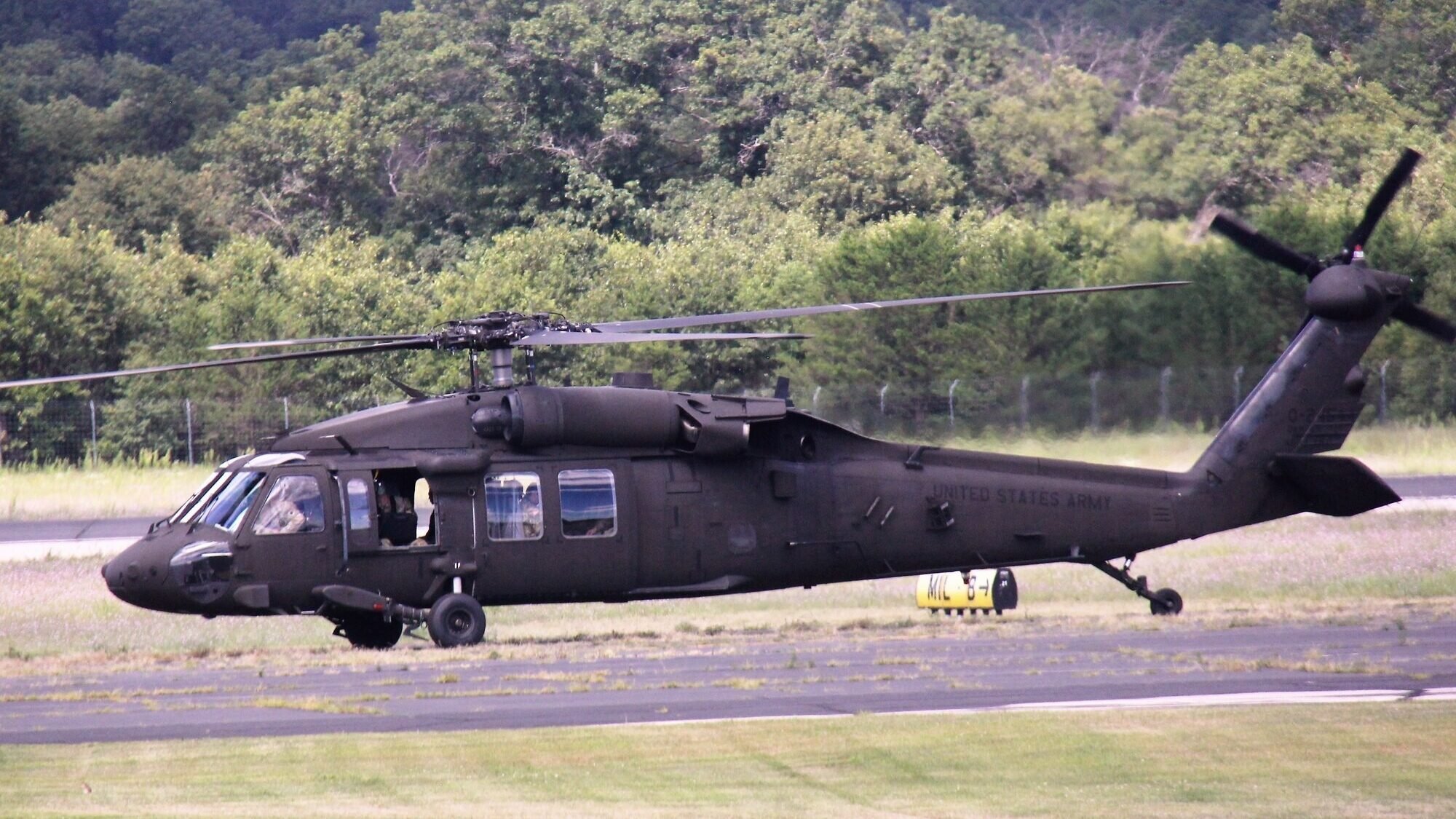
An aircrew with the 106th Aviation Regiment, Illinois Army National Guard, takes part in Army modernization efforts at Fort McCoy, Wis., on Aug. 4, 2022, by operationally testing the UH–60V Black Hawk helicopter while preparing for an upcoming deployment. (US Army)
This story was updated on 4/27/2023 at 5:30pm ET to include new information about the delay based on comments from the Army’s Program Executive Officer for Aviation, Maj. Gen. Robert Barrie.
AAAA 2023 — The US Army has postponed making a full-rate production decision on its UH-60V Black Hawk upgrade with new digital cockpit until it completes a “deliberate and rigorous review” of the Northrop Grumman program and dollars are properly aligned, the service has told Breaking Defense. The postponement comes after the service revealed it plans to invest in fewer of the upgrades than previously indicated.
In August 2022, the Army completed an essential test and evaluation event with the digital cockpit to determine if past glitches had been adequately fixed. At that time, the service billed the test as “successful” and noted that the Army Test and Evaluation Command’s operational evaluation report would be released in December 2022, with plans to make a full-rate production decision by the end of this March. That key milestone date has now come and gone.
“The Army has not made a full-rate production decision for the UH-60V,” a spokesperson for the Program Executive Office for Aviation wrote in an April 20 statement to Breaking Defense. “The milestone decision authority is following a very deliberate and rigorous review process to ensure that the 60V is ready for full-rate production. The decision will be made when the review is complete.”
The spokesperson declined to specify when that review is now expected. However, he said the service is continuing to field UH-60Vs, billed as an upgrade of the UH-60L version that includes a digital glass cockpit and integrated avionics suite. Those upgrades are designed to provide pilots with increased situational awareness, integrated aircraft survivability equipment, improved navigational guidance, and reduce pilot workload, according to the service.
Following the original publication of this report, the Army’s Program Executive Officer for Aviation Maj. Gen. Robert Barrie said the main source of the delay is aligning different pots of money. “What we’re trying to do is make sure we have the dollars aligned…and making sure they’re just right,” he told reporters on Thursday.
A company official told Breaking Defense that Northrop Grumman is ready to ramp up production as soon as the service gives it the green light.
“There’s been no formal announcement of full-rate production, but all the underpinnings are there to support it,” Brendan Kelly, the company’s vertical lift director, said during an April 19 interview.
What isn’t abundantly clear is what that ramp up will ultimately look like, in part, because in the Army’s fiscal 2024 budget request it revealed that it plans to buy fewer UH-60V kits over the next few years than previously indicated.
Specifically, the service received money to buy 21 UH-60V kits in FY23 (a reduced number than planned “driven by the inflation impacts”) and last year said it would seek funds to buy 28 UH-60V kits in FY24, according to budget documents. However, it is now also seeking funds to buy 26 kits next year and doesn’t plan to offset that dip in the outyears. Instead, for FY25 it had planned to buy 42 kits, but the number is now reduced to 34, while for FY26 the figure is reduced from 48 down to 44, and for FY27 cut from 48 to 42.
“We’re seeing that the [program] hasn’t ramped as quickly as they had expected,” Kelly said. “We’re having that conversation with them in real time… and what we saw was a minor decrement, not a huge one.”
“As we look at full-rate production, I think there’s going to be a revisitation of what that’s going to look like from a quantity perspective,” he later added.
Tech Development
In the most recent Director of Operational Test and Evaluation report, the Pentagon’s testing office explained that the program updates the existing UH-60L analog architecture to a digital infrastructure.
“The program will address current capability gaps while employing an evolutionary acquisition approach to leverage mature technologies that have been successfully integrated on other military aircraft,” the report adds.
The Army and Northrop have spent years on working on the cockpit redesign and conducted the UH-60V Initial Operational Test and Evaluation (IOT&E) I in 2019. However, that test event was deemed “not adequate” because the software, hardware, and production processes were not “production representative,” DOT&E wrote.
Service and company officials set out to work through the challenges and last year tested out their work during IOT&E II. The Pentagon tester said “early observations” indicate that the program corrected many of the faults found during the first go around but said a complete report had not been completed in time for the office’s annual report.
Barrie said Thursday the final test report has showed that the program is operationally effective, suitable, and survivable.
“We’re just doing that final step,” he added.






















